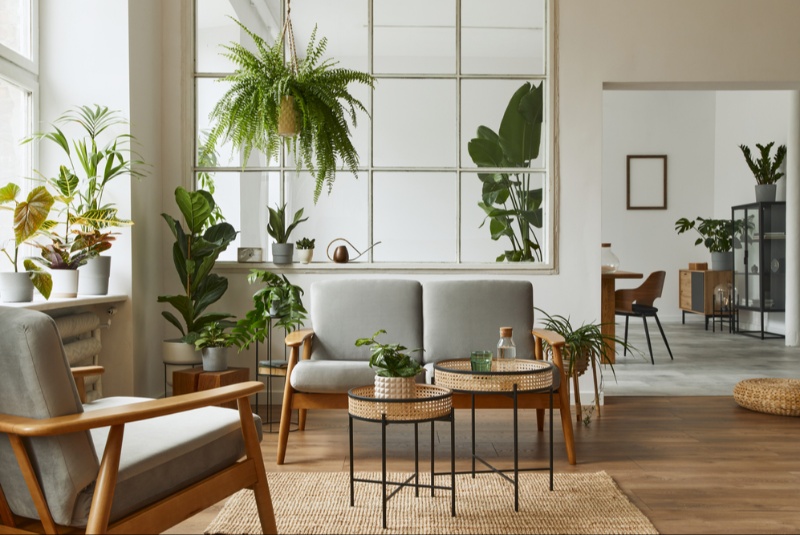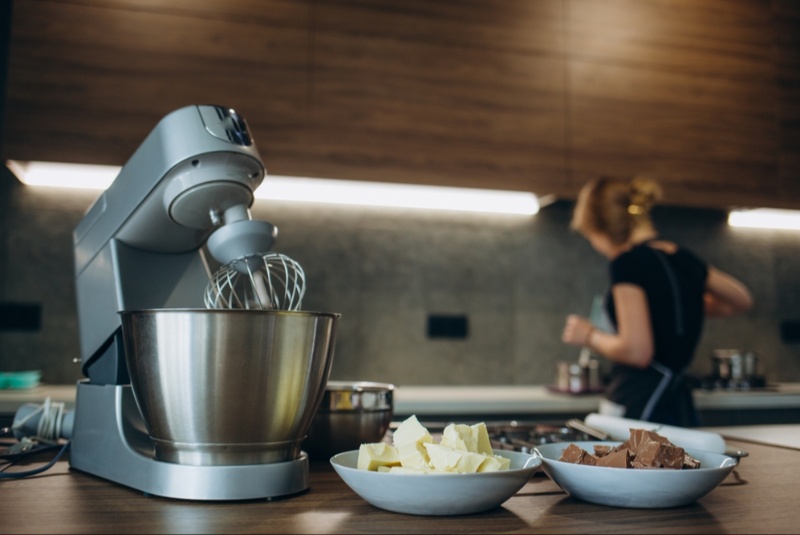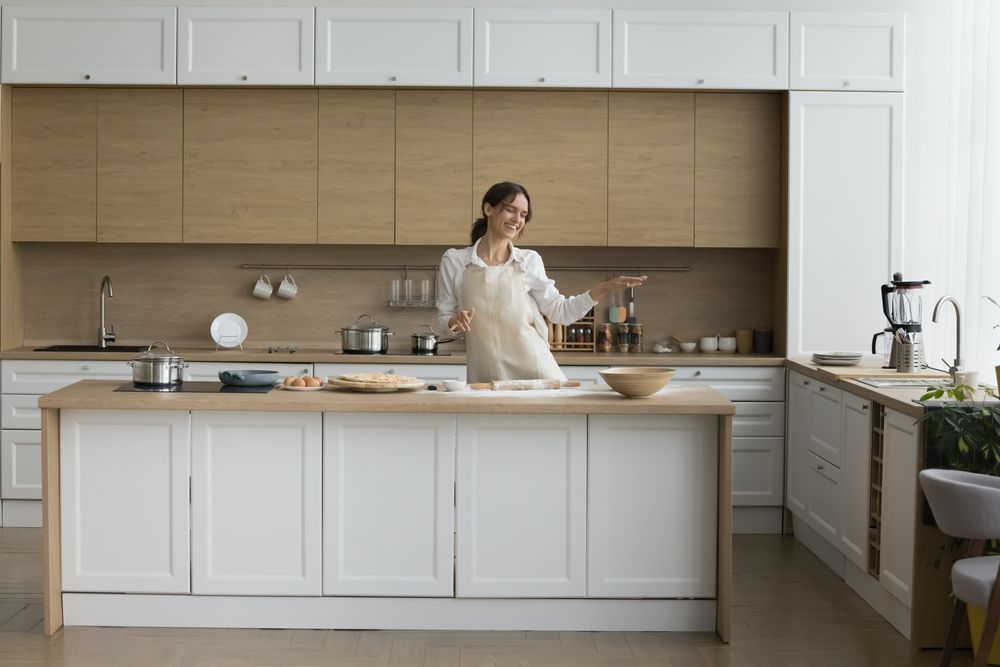Indoor plants have surged in popularity in recent years, bringing a fresh, green charm to homes, offices, and even cozy café corners. They offer more than just aesthetic appeal; indoor plants have been shown to improve air quality, increase humidity, reduce stress, and even boost overall well-being. However, before you dash to the nearest nursery or online plant shop, it's essential to arm yourself with knowledge to make the right choice. This comprehensive guide will outline key considerations to ensure you invest in the perfect plant for your space and lifestyle.
1. Understand Your Space
Every plant has specific environmental needs, and assessing the conditions in your home is the first step toward making a smart choice.
Light Requirements: Plants rely on light to thrive, and different plants have varying light preferences. Familiarize yourself with your home's lighting before purchasing:
- Low Light: Ideal for spaces with little to no direct sunlight, such as north-facing rooms or areas with diffused light. Plants like pothos, snake plants, and ZZ plants are well-suited for these conditions.
- Medium Light: Spaces that receive indirect sunlight or a few hours of direct sunlight. Plants like the peace lily or spider plant do well here.
- High Light: Areas with bright, direct sunlight for most of the day, such as south- or west-facing windows. Succulents, cacti, and fiddle leaf figs are ideal for such locations.
Temperature and Humidity: Some plants thrive in warmer environments, while others prefer cooler spaces. If you live in a dry climate, tropical plants that require high humidity, like ferns and calatheas, might need additional care with a humidifier or regular misting. Conversely, arid-loving plants like cacti and succulents prefer lower humidity.
2. Decide on the Plant's Purpose
While all plants contribute positively to their surroundings, understanding the primary purpose of your plant purchase can narrow down your choices.
Aesthetic vs. Functional: Are you buying a plant for its visual appeal or its functional benefits? If you’re looking for an air-purifying plant, consider options like the snake plant, peace lily, or Boston fern. If you’re looking to brighten a space with vibrant foliage or unique textures, ornamental plants like rubber trees, fiddle leaf figs, or bird of paradise might suit your needs.
3. Gauge Your Commitment Level
Each plant has unique care requirements, and being honest about the time and effort you’re willing to dedicate is essential.
Time and Maintenance: Do you have experience with plants, or are you just beginning? Some plants, like succulents, ZZ plants, and snake plants, are very low-maintenance and suitable for beginners. More demanding plants, like ferns and orchids, require regular care and attention.
Watering Needs: One of the most common mistakes new plant owners make is overwatering. Some plants need frequent watering, while others, like cacti and snake plants, thrive on infrequent water. Understanding your plant’s watering rhythm will help keep it healthy and prevent root rot.
4. Consider Pet and Child Safety
If you have pets or young children, it's important to consider the potential toxicity of certain plants. While beautiful, some plants can be harmful if ingested. For example, philodendrons, lilies, and certain types of ivy are toxic to both pets and humans. Instead, opt for non-toxic options like spider plants, Boston ferns, or calatheas, which are safe for curious little ones or animals.

5. Size and Growth Considerations
Plants can grow rapidly with the right care, and what starts as a small addition to your décor could quickly outgrow its space.
Consider the Mature Size: Check the expected mature size of the plant. Some indoor plants, like fiddle leaf figs and rubber trees, can grow several feet tall and may eventually need to be relocated if they outgrow their current spot. Make sure the space can accommodate your plant’s growth or consider smaller plants that remain compact.
6. Budget Constraints
While indoor plants are generally affordable, rare varieties or large specimens can be costly. Remember to factor in additional costs, such as pots, soil, and fertilizers. If you’re repotting, you might need new containers as the plant grows. There’s also the option of buying cuttings, which are often more affordable and allow you to watch your plant grow from scratch.
7. Disease and Pest Resistance
Nobody wants pests or diseases in their home, but some plants are more susceptible than others.
Pest-Prone Plants: Certain plants, like ferns and palms, are known to attract pests like spider mites and aphids. If you’re concerned about pests, opt for plants that are naturally more resistant, like snake plants or rubber plants. Regularly inspecting your plants for signs of pests and maintaining a clean environment can also help prevent infestations.
8. Longevity and Life Span
Some plants thrive for years, while others have shorter life spans, especially under indoor conditions.
Long-Term Companions: If you’re looking for a plant that can grow with you, consider options like the snake plant, ZZ plant, or rubber tree, which can live for many years with proper care. Flowering plants, like certain types of orchids, may only bloom for a short period each year and might require more frequent replacements.
9. Allergy Considerations
It’s possible for certain plants to trigger allergies in sensitive individuals. Plants with heavy pollen, like lilies, can cause reactions in allergy sufferers. For a more allergy-friendly choice, opt for plants with low pollen production, like palms, orchids, or snake plants.
10. Adaptability to Environment
If your home’s conditions fluctuate often, choose plants that can tolerate varying conditions.
Resilient Choices: Plants like the ZZ plant and pothos are known for their adaptability, tolerating a range of light, humidity, and temperature levels. These plants are ideal for people who may not have a consistently stable environment but still want to enjoy the benefits of indoor greenery.
11. Pot and Soil Selection
Selecting the right pot and soil can have a significant impact on your plant’s health.
Drainage: Choose pots with drainage holes to prevent water from pooling, which can lead to root rot. Ensure the soil matches the plant’s needs; for example, cacti and succulents require well-draining soil, while ferns thrive in moisture-retentive soil.
12. Plan for Repotting
Most plants outgrow their pots eventually, requiring repotting every one to two years. Repotting ensures that the plant has enough space to grow and access to fresh soil and nutrients. When you notice roots emerging from the drainage holes or the plant becoming top-heavy, it’s time to consider moving it to a slightly larger pot.
In summary, selecting the right indoor plant involves a mix of aesthetic preferences, environmental conditions, and personal lifestyle. By carefully assessing these factors—such as lighting, maintenance, pet safety, and budget—you can make a well-informed choice that suits your home and enhances your well-being. Indoor plants bring beauty and life to any space, and with the proper care, they can thrive and become cherished members of your home.




